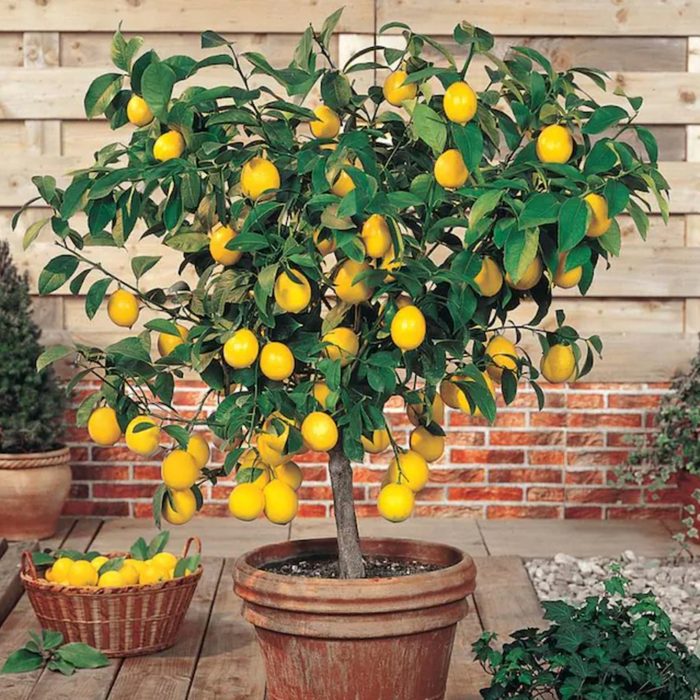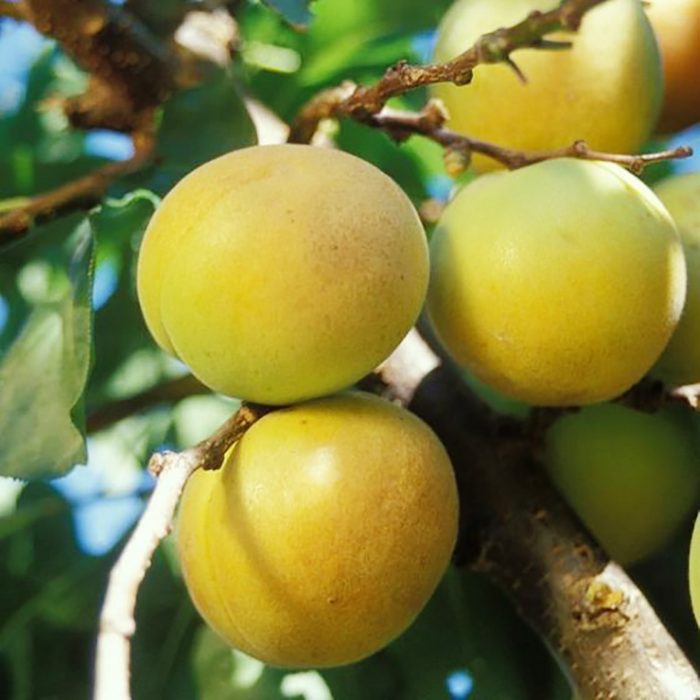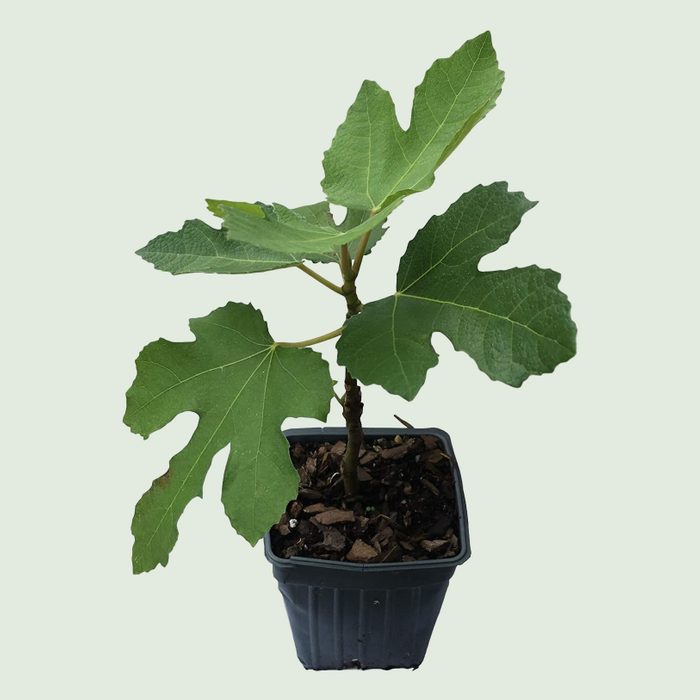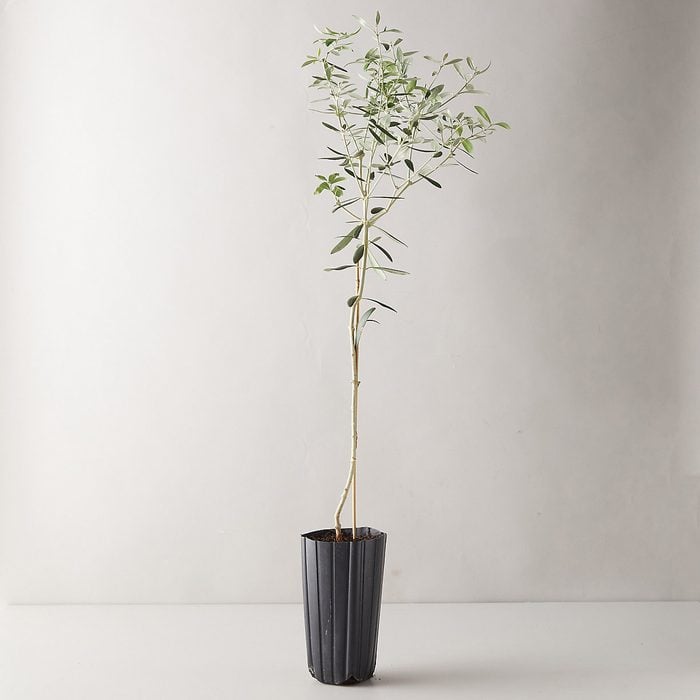How To Fix Curly Leaf On Fruit Trees
10 Best Fruit Trees You Can Grow Indoors
Love fruit trees but don't have a backyard or garden space? No problem! You can grow these indoor fruit trees right in your home.
Every editorial product is independently selected, though we may be compensated or receive an affiliate commission if you buy something through our links. Ratings and prices are accurate and items are in stock as of time of publication.
 Victoria Pearson/Getty Images
Victoria Pearson/Getty Images
Your very own giving tree
Although it may sound strange to contemplate having an actual tree within the confines of your house, it's not only possible—it's also a really good idea. Indoor fruit trees will add color and vibrancy to your home, just like any of the best indoor plants, but they'll also provide you with some delicious homegrown goodies…as long as the lighting and soil conditions are right. "Most fruit trees need bright, full sun for approximately six to eight hours a day, all year long, to present with fruit," says Bloomscape's "Plant Mom," horticulturalist Joyce Mast. "If you do not have an area in your home where you can give it enough light, consider using a grow light or placing your fruit tree outdoors during the summer months."
All that said, you obviously can't have a full-size tree growing in your home, which is why you'll want the mini versions of the trees you love. Mast suggests the dwarf varieties for size, adding that you should choose the most mature trees available since they have faster fruiting times. The following varieties of lemon, apricot, banana, fig, and other small trees will be your best bets if you're looking for fruits to grow indoors. Looking to expand your at-home garden? Try the easiest vegetables to grow at home (make sure to read these tips for growing vegetables first!) and the best container garden ideas for your backyard, balcony, or patio.
 via lowes.com
via lowes.com
Dwarf Meyer lemon tree
Meyer lemons are prized in the kitchen because of their perfect balance of tartness and sweetness, and they are one of several indoor fruit trees that are easy to grow. "Dwarf Meyer lemon trees are a great option for indoor growers, primarily because they're self-pollinating and require relatively little heat for the fruit to ripen," explains Blake Harris, a second-generation horticulturalist and the CEO of Vegepod. The only thing is, they need lots of humidity. "These trees thrive in humidity, so spritz regularly!" Another option is putting your tree next to a humidifier to keep it moist.
The soil you choose is also essential for having a healthy tree. "For maximum fruit production," Harris says, "make sure to use a slightly acidic, loam-based soil—a combination of sand, silt, and clay—which mirrors the soil composition in parts of the country where they naturally grow best." Plus, Mast adds, you may need to prune the tree to keep the size manageable for your home. And here's another bit of info you'll want once you start harvesting your haul: Here's how to store lemons the right way.
Shop Now
 via lowes.com
via lowes.com
Dwarf key lime tree
Is there anything more summery than a key lime pie? Make your own at home—after growing the fruit you need for it at home, too! The key here is making sure your tree receives sufficient sunlight every day. Also, make sure not to overwater because this tree is prone to root rot if the soil is kept too wet. "I suggest using a well draining potting soil and allowing the soil to dry out somewhat between waterings," says Mast. Because key limes are not self-pollinating, you'll need to place this tree outside in the summer months so bees can pollinate it to produce fruit.
Shop Now
 via shopterrain.com
via shopterrain.com
Makrut lime tree
Kaffir limes, also known as Makrut lime, are great for cooking, and they're easy to grow indoors. Plus, this indoor fruit tree offers double the rewards—you can also use the leaves in your cooking, such as in curries or sauces.
Like key limes, Kaffir limes shouldn't be overwatered, and they do best when the soil dries a little before the next watering. The amount of sunlight and warmth is also important. "Provide six to eight hours of direct sunlight, and turn the tree every week to ensure all the sides get equal sunlight [for] proper growth," advises Mast.
Shop Now
 via amazon.com
via amazon.com
Calamondin dwarf orange tree
Not familiar with Calamondins? They're a variety of small oranges that are known for being juicy and tart—and they're great for indoor growing conditions, says Mast. These trees typically range in height between four and six feet tall. For the best results, use a loamy soil mix of clay and sand, and make sure to keep it moist. Mast emphasizes that for a Calamondin to live a long, happy life, you can't let the soil dry out completely. Translation: You need to be an attentive plant parent!
RELATED: Houseplants Anyone Can Grow
Shop Now
 Angela Dukich/EyeEm/Getty Images
Angela Dukich/EyeEm/Getty Images
Dwarf Moorpark apricot tree
It may be a fun experiment to grow this stone-fruit tree from a pit, don't expect any actual apricots for two to five years, says Harris. Instead, he suggests opting for a young tree: "If you [do that], you could be enjoying apricots in the first year." For optimal growing conditions, he advises using a rich, loamy soil and keeping it extra happy by mixing in some nutrient-rich compost. Need a reason to buy an apricot tree (aside from the fact that apricots are delicious)? They are one of the foods that are naturally high in digestive enzymes.
Shop Now
 via naturehills.com
via naturehills.com
Goldcot apricot tree
Another fantastic choice if you're dreaming of picking apricots first thing in the morning while still in your pajamas? Mast suggests the dwarf variety of the Goldcot apricot tree. Goldcots are delicious to eat fresh from the tree, and if you end up with an abundance, consider canning them.
These indoor fruit trees prefer moist but not soggy soil, and Mast says you'll need to water them regularly to make sure the soil doesn't dry out. They also need lots of sun, so place the tree by a south-facing window to ensure sufficient light and heat. Just like the Moorpark variety, Goldcots also "prefer a snug pot with a loamy soil mix of clay and sand," says Mast. If you don't have a lot of sunlight in your space, you might be better off with these low-light houseplants that thrive in near darkness.
Shop Now
 via amazon.com
via amazon.com
Super dwarf Cavendish banana tree
Banana trees are low-maintenance plants that are relatively easy to take care of, as long as they receive ample sunlight and the proper temperature is maintained. "Indoor bananas need to be kept at about 80 degrees during the day and around 67 degrees at night," Mast says. Bananas are tropical plants that also need a lot of humidity. If you have a bathroom with a south-facing window, that might be your best bet. Or if you want your banana tree on full spray, put it in a sunny spot and regularly spray it with water. "Misting the foliage is also a very good idea to keep it hydrated and happy," adds Mast.
Shop Now
 via amazon.com
via amazon.com
Dwarf lady finger banana tree
Another dwarf banana variety is the lady finger, which hails from the South Pacific. Just like the Dwarf Cavendish, this variety also needs a lot of heat and sunlight. When it comes to watering, it's important to water frequently but not oversaturate the soil. "Indoor bananas need more water than those grown outside," explains Mast. "However, always make sure the plant is never allowed to sit in water, as this will cause root rot. Allow the plant to dry out just a bit between watering."
RELATED: Indoor Plants Perfect for Small Spaces
Shop Now
 via amazon.com
via amazon.com
Brown turkey fig tree
If you love snacking on figs when they're in season, then this is the indoor fruit tree for you. Although there are many varieties, Mast recommends this one—with their burgundy to purple skin and bright pink flesh—for your indoor-growing adventures since they're easy to care for and adapt well to different conditions. Figs prefer climates with lots of moisture and humidity in the air, so you should mist them regularly, according to Mast. The soil you choose is important and will provide the necessary nutrients for the tree to thrive, and you'll want to go with a loamy soil mix of clay and sand for the best results.
Shop Now
 via shopterrain.com
via shopterrain.com
Olive tree
This one may come as a shock to you, but yes, you can grow an olive tree in your home! Harris suggests the Picholine, in particular, since it's a low-maintenance option. Which one is the Picholine, exactly? "The Picholine originates from France and is often known as the cocktail olive," Harris says. "You know, the one placed in martinis." Cheers to that! The Arbequina olive tree, a Spanish variety, is another option and does well in small spaces and is known for a high yield.
Olive trees love the sun, and regardless of what variety of olive tree you choose, they do need more light than some other indoor trees. That's why, Harris says, you should place your olive tree near a window where it will get at least six to seven hours of sunlight." If something goes awry during the growing process, here's how to revive a dead or dying plant. (No judgment here—just solutions!)
Shop Now
Sources:
- Joyce Mast, a horticulturist known as the "Plant Mom" at Bloomscape
- Blake Harris, a second-generation horticulturalist and CEO of Vegepod
Originally Published: May 12, 2021
Sign up for articles sent right to your inbox
Enjoy the best stories, advice & jokes delivered right to your inbox!

Subscribe & SAVE Save Up To 84%!
How To Fix Curly Leaf On Fruit Trees
Source: https://www.rd.com/list/indoor-fruit-trees/
Posted by: kenworthycrecry.blogspot.com

0 Response to "How To Fix Curly Leaf On Fruit Trees"
Post a Comment